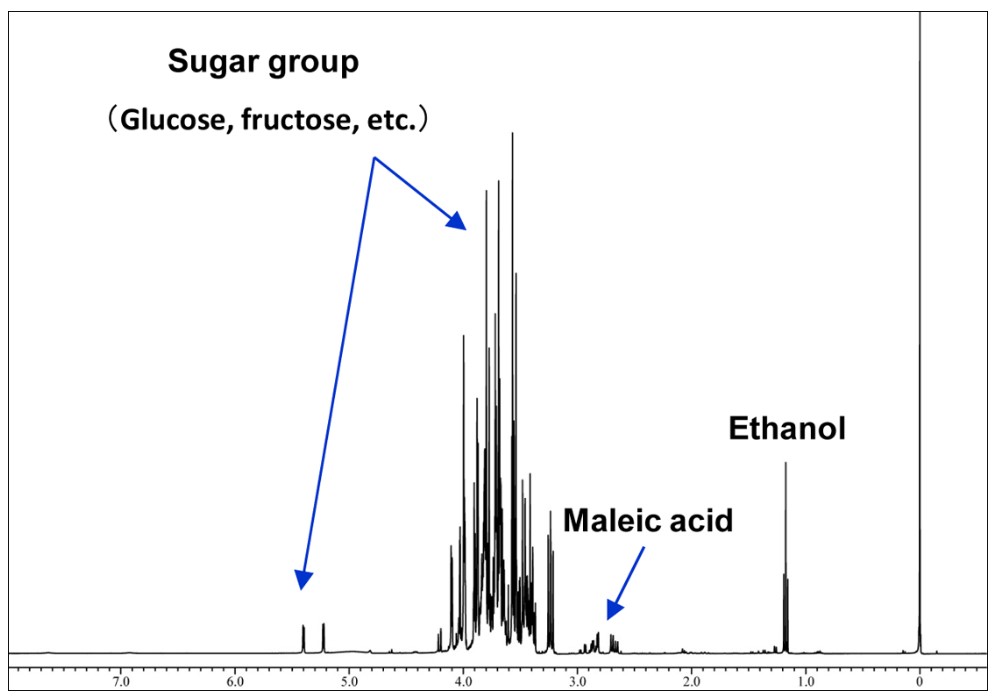Using Quantitative NMR
Issue 4
With qNMR it is possible to confirm the proportion of a target component in a sample, and to determine the absolute amount (content) of the components of interest.
Measuring the ratio of components
This is useful for samples that include multiple components, such as polymers and chemical products. Of course, liquid chromatography can also be used to perform separation and analysis to determine the ratio of components in a sample. However, even though analysis with NMR is not a separation analysis, the properties of NMR can be exploited to perform very efficient analysis.
Although it is not separation analysis, in order to obtain an accurate ratio of the components there is a requirement for the NMR signals derived from the components of interest to be separated (clearly resolved) on the spectrum and independent (no overlap with signals from impurities). If these conditions are satisfied, however, it is possible to efficiently quantify multiple components with one measurement setting. The figure shows a 1H-NMR spectrum of apple juice. The presence of signals from ethanol and sugars can be seen. In the case of apple juice, the ethanol and sugar signals can be observed separately, and both qualitative and quantitative analyses are possible. It is extremely efficient to be able to simultaneously obtain the qualitative and quantitative information without changing the measurement conditions.
Measuring the content
This is useful for checking reagents and raw materials for various purposes, such as synthetic compounds and natural products. A major feature of qNMR is that it does not require a standard reference material that is identical to the analyte. This is extremely useful for quantification of new compounds.
Furthermore, the traditional methods used to measure the absolute purity of an organic compound have been extremely precise methods like freezing point depression, but these methods are cumbersome for practical use. With NMR, it is possible to prepare a suitable quantitative reference material and measure the content (purity) of a variety of organic compounds.
NMR is an analytical instrument that has become widely used for structural analysis. It is also possible to practically perform determination of the content (purity) of organic compounds. In addition, the measurements can be performed in moles, which is an SI unit. By using a quantitative reference material that is certified as having metrological traceability, and performing the appropriate operation procedures, it is possible to obtain analytic results that are SI-traceable. This is the reason that quantitative NMR is used for the standard substances of many organic compounds. As an added bonus, if the conditions are satisfied, it is also possible to determine the content of multiple components within the analyzed sample using just 1 standard reference material.
So, does it look like qNMR will be useful for your research and daily tasks?

Are you a medical professional or personnel engaged in medical care?
No
Please be reminded that these pages are not intended to provide the general public with information about the products.
